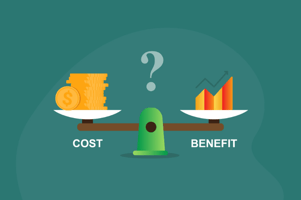In the ever-evolving landscape of web development, Content Delivery Networks (CDNs) have emerged as...
Maximizing Android App Performance with CDN: Guide
In the realm of Android app development, achieving optimal performance is paramount for user satisfaction and app success. With billions of users accessing the Google Play Store, the competition is fierce, and only the best-performing apps make it to the top. This article draws inspiration from various sources, including a detailed piece by Quantumsoftech on Medium, to provide a holistic view of maximizing Android app performance through the use of Content Delivery Networks (CDNs) and other strategies.
The Importance of High-Quality Android Apps
Google's algorithm updates have made it clear: high-quality apps with strong technical performance and engaging content are prioritized in the Play Store. As an Android app developer, focusing on three core areas is crucial:
1. Best in-app UX (User Experience): Ensure smooth user interactions by adhering to quality guidelines, conducting track testing for early feedback, creating engaging content, and placing ads thoughtfully to not disrupt the user experience.
2. Stable and Efficient Technical Performance: A significant portion of negative reviews stems from bugs and errors. Utilize Android vitals to monitor app performance metrics like crash rate and ANR rate. Pre-launch reports can identify and rectify issues before release, enhancing overall app quality.
3. Effective Store Listing Page: An app's store listing page is its first impression. Use crisp creative assets, update your app icon, monitor ratings and reviews, and customize your marketing messages for different user groups. Localization can further improve your app's global reach.
Leveraging CDN for Enhanced Performance
A Content Delivery Network (CDN) is a network of servers distributed globally, designed to deliver content to users more efficiently based on their geographic location. For Android apps, utilizing a CDN can significantly improve performance in several ways:
- Reduced Latency: By caching content on servers closer to the user, CDNs reduce the time it takes for data to travel, resulting in faster load times and a smoother user experience.
- Scalability: CDNs can handle sudden spikes in traffic, ensuring your app remains responsive and available during peak times.
- Content Optimization: Many CDNs offer features like image optimization and minification of JavaScript and CSS, which can further speed up content delivery.
Implementing CDN in Your Android App
1. Choose the Right CDN Provider: Consider factors like geographic coverage, features, and cost. Popular CDN providers include BlazingCDN, Cloudflare, Amazon CloudFront, and Akamai.
2. Integrate CDN with Your App: This typically involves configuring your app to request content from the CDN's servers. Most CDN providers offer detailed documentation to guide you through this process.
3. Monitor Performance: Use tools like Google PageSpeed Insights and GTmetrix to measure the impact of the CDN on your app's performance. Adjust your CDN configuration as needed to optimize delivery speeds.
Maximizing Android app performance is a multifaceted endeavor that extends beyond just technical optimization. By focusing on user experience, technical stability, effective store presentation, and leveraging the power of CDNs, developers can significantly enhance their app's performance and standing in the Google Play Store. Remember, in the competitive landscape of app development, every millisecond counts, and a CDN can be the edge you need to surpass your competitors.


